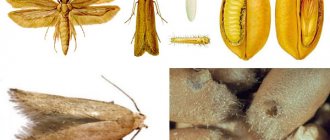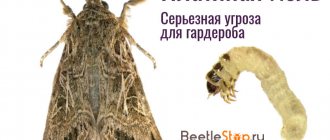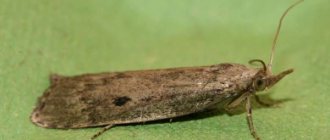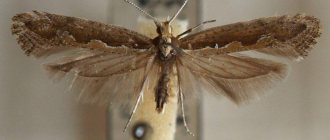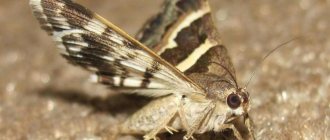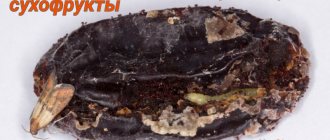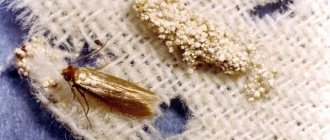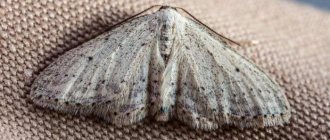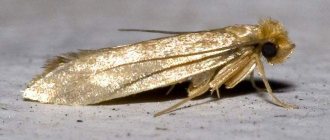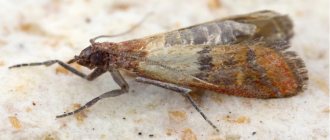Perhaps not a single modern textbook on molecular physics, and especially on chemistry, can do without such concepts as: amount of substance, mole, molar mass, Avogadro’s number. Let's try to figure out what it is, and at the same time count how many molecules are in a glass of water.
When it comes to the atoms and molecules that make up substances, there are two things to understand:
- We are dealing with something very “small”.
- There is a lot of this “small” thing.
All this, naturally, makes its own adjustments. For example, to measure the mass of atoms and molecules, using the usual grams and kilograms will not be entirely convenient.
Thus, according to modern calculations, the hydrogen atom has a mass of about 1.6726• 10-27 kg. and the carbon atom is 1.995 • 10-26. This is of course 12 times more, but still very little. And it is clear that to work with such numbers you will need a good engineering calculator and nerves of steel. Well, for those who do not have either one or the other, a special value was introduced, which reduced all calculations to the level of elementary school arithmetic.
Relative atomic and molecular masses (Ar, Mr).
Relative atomic mass (Ar) is the ratio of the mass of an atom to 1/12 the mass of a carbon atom. (To be more precise, a neutral atom of the carbon isotope 12C). Relative molecular mass (Mr) is the ratio of the mass of one molecule to 1/12 the mass of a carbon atom.
Why carbon? The physics textbook for grade 10 tells us the following:
Comparing the masses of atoms and molecules to 1/12 the mass of a carbon atom was adopted in 1961. The main reason for this choice is that carbon is found in a huge number of different chemical compounds. The factor 1/12 was introduced so that the relative masses of the atoms were close to whole numbers.
- Myakishev, Bukhovtsev, Sotsky, Textbook Physics 10th grade.
Relative atomic mass can be found in the periodic table.
If we want to find the relative molecular mass for a molecule, then it is necessary to add up the relative atomic masses of all the atoms included in its composition.
Well, for example, if we take water, then a water molecule consists of two hydrogen atoms and one oxygen atom. The relative atomic mass of hydrogen is 1, that of oxygen is 16. Accordingly, we get 1+1+16=18. Simple arithmetic. As I said.
Relative molecular mass, as well as relative atomic mass, are dimensionless quantities. They show how many times the mass of a given molecule or atom is greater than 1/12 the mass of a carbon atom. Which, by the way, is equal to 1.660 539 066 60 •10-27 kg, or approximately 1.66 •10-27 kg. This number is also called the atomic mass unit or amu.
1 amu ≈ 1.66 •10-27 kg.
Knowing this, we can easily determine the mass of any molecule by multiplying its relative molecular mass by 1.66 • 10-27 kg.
m 0 ≈ Mr•1.66 •10-27 kg.
If anyone is interested, you can calculate the mass of a water molecule, but we move on.
Relative density of one gas to another
Sometimes, to solve a problem, you need to know how to find the molar mass of a gas, for which only its density in air or another gas is reported. This is possible if you know the relative density formula, which is denoted by the letter D.
, where and are some gases.
Example 1
How to determine how many times carbon monoxide is denser than hydrogen?
First, let's find the molar mass of CO and H2:
M(CO) = Mr(CO) = Ar(C) + Ar(O) = 12 + 16 = 28.
M(H) = Mr(H2) = 2 Ar(H) = 2 1 = 2.
.
Answer: Carbon monoxide is 14 times denser than hydrogen.
Example 2
How to calculate the molar mass of a gas x, which is known to be 10 times denser than carbon dioxide CO2?
First, let's calculate the molar mass of carbon dioxide:
M(CO2) = Mr(CO2) = 12 + 2 16 = 44.
Based on the relative density formula, we will calculate the molar mass of the desired gas x.
M(x) = D(x/CO2) M(CO2) = 10 44 = 440 g/mol.
Answer: This gas has a molar mass of 440 g/mol.
Avogadro's number, mole and amount of substance.
Measuring the number of molecules in pieces is just as inconvenient as measuring the mass of individual molecules in kilograms.
And here, again for convenience, we introduce such a quantity as the amount of substance . It is denoted by the Greek letter nu (ν), and is measured in moles. Do not confuse it with the moth that lives in wardrobes and feeds exclusively on fur coats.
A mole is an amount of substance that contains as many atoms (or molecules) as there are atoms in 12 grams of carbon.
And there are 6.02•1023 of them. This number is called Avogadro's number (NA). In honor of the Italian scientist from Turin Lorenzo Romano Amedeo Carlo Avogadro di Quaregna e di Cerreto (Don't be alarmed, it's all one person).
Avogadro's number is the number of atoms or molecules in one mole of a substance.
NА =6.02•1023 Mol -1
To have an idea of what 1 mole of a substance is, and, accordingly, what Avogadro’s number is, let’s consider a simple example. If we take the size of one grain of sand as 1 mm3, then 1 mole of such grains of sand will occupy a volume of 6.02•1014 m3. If we spread this sand in a layer 150 meters thick, we will get a desert with an area of about 4,000,000 km2. For comparison, the area of the Sahara Desert is 9,200,000 km²...
Molar volume
Above we found the amount of a substance through molar mass, but for gases this can also be done through molar volume. According to Avogadro's law, an amount of any gas equal to 1 mole will occupy the same volume if the gases are considered at the same temperature and pressure.
Under standard physical conditions - temperature 0°C and pressure 1 atm or 760 mmHg, 1 mole of gas occupies a volume of 22.4 liters.
Molar volume is the volume of gas taken in the amount of 1 mole. It is designated Vm.
Under normal conditions, Vm = 22.4 l/mol.
The values of the molar and actual volume of a gas help to find the amount of a substance.
, where is the actual volume of gas, and is the molar volume.
Example 1
How many moles are contained in 120 liters of gas under normal conditions?
Let's calculate using the formula mole.
Answer: 120 liters of any gas under standard conditions contain 5.36 moles.
Molar mass (M)
Another important quantity is molar mass. No, this is not a mass of painter, as it might seem. Molar mass (M) is the mass of one mole of a substance. Everything is simple here, if one mole contains NA particles (i.e. equal to Avogadro’s number), then by multiplying the mass of one such particle m0 by Avogadro’s number, we get the molar mass.
But this is not necessary, since the paint mass can be easily recognized from the periodic table. How? Just like relative molecular weight. In general, this will be the same number, only the units of measurement will be different, in the first case there will be no units at all (since the quantities are dimensionless), and in the second, it is g/mol. Well, or to convert the molar mass to the SI system, you need to multiply it by 10-3. We get kg/mol.
What will be the molar mass of water? Right! 18 g/mol or 18•10-3kg/mol
§ 2 Mole A quantity of a substance numerically equal to the relative molecular mass, but expressed in grams, was called a gram molecule or mole.
The word “moth” was coined at the beginning of the 20th century by the German physical chemist and Nobel Prize laureate Wilhelm Ostwald. The word comes from the word "molecule".
A mole is the amount of a substance containing as many structural units (atoms, molecules) as there are atoms in 0.012 kg of carbon.
According to the International System of Units SI, the mole is a unit of measurement of a special physical quantity - the amount of a substance. The quantity of a substance (denoted by the Greek letter ν) is understood as the number of structural units of this substance (atoms, molecules, etc.).
The most important thing is that 1 mole of any substance contains the same number of molecules. This number is called a constant or Avogadro's number. It is designated by the symbol NA. Avogadro's constant was calculated a long time ago and is a very large number.
If the mass of 1 mole of carbon 12 g/mol is divided by the mass of 1 carbon atom 1.99ž10-23 g, the result is a number equal to 6.02 1023. Since this number represents the number of particles in 1 mole, its units are written as 1/mol, mol-1 or reciprocal mole.
To somehow imagine this number, let’s just say that it is greater than the number of glasses of water contained in the World Ocean, and 6.02 1023 grains of wheat would have a mass of about 2 1016 tons.
It would take more than 2 million years to harvest such a harvest. It is clear from the examples: using Avogadro’s number to count macrobodies is meaningless. Its main purpose is to determine the number of particles (atoms and molecules) of the microworld and the connection between the units of the micro and macroworld.
Knowing the amount of a substance, one can judge the number of particles in a certain portion of it and take substances for reactions in the required quantities. Thus, chemists can determine the number of atoms and molecules by weighing portions of substances. Let us give examples of such calculations. To calculate the amount of a substance, knowing the number of particles, we use formula 2 where ν is the amount of substance in moles, N is the number of particles of the substance, NA is Avogadro’s constant.
Problem: How much substance does 1.505·1023 water molecules contain?
In chemistry, such a quantity as the number of particles is rarely used. It is much easier to use quantities that are easy to measure. This quantity is the mass of a substance. How are mass and quantity of a substance related? Knowing the number of molecules of a substance in one mole and the mass of one molecule, we can calculate the mass of one mole of a substance. For example, it is known that the mass of a water molecule is equal to
2.992·10-23g. Multiplying it by Avogadro's constant, 6.02 1023 reciprocal moles, we get
18 g/mol is the mass of one mole of water or the molar mass of water.
Wax moth tincture, extract, beneficial properties and application
Wax moth (bee moth) is a beekeeping pest. Its caterpillars feed on honey, beebread, and wax frames, damaging bee offspring and the hive. If the infection is severe, the bee colony may die completely or leave its home.
But this pest has a number of properties that made it popular in folk medicine. Parasitic larvae produce cerrase, an enzyme that helps in the treatment of many diseases. Experienced beekeepers take advantage of this and even specifically breed the parasite.
Wax moth tincture
The larvae are able to digest wax. This discovery made them a popular remedy in the treatment of tuberculosis: Koch's bacillus (the causative agent of the disease) is covered with a waxy shell. Accordingly, the use of a parasite destroys the protective shell of the wand and makes it susceptible to medications. At the same time, the larvae are used for coughs, strengthen the immune system and have a beneficial effect on the hematopoietic system.
What is treated with wax moth:
- bronchopulmonary diseases, even such serious ones as pneumonia and asthma;
- oncological pathologies;
- heart disease (heart attack, ischemia, anemia, atherosclerosis);
- lack of hemoglobin and red blood cells;
- normalize blood pressure;
- liver diseases.
Bee moth in gynecology: promotes conception, pregnancy, relieves symptoms of toxicosis, fights anemia. For men, it is useful because it prevents impotence, infertility, and increases sperm activity.
How to prepare wax moth tincture:
- Young moth larvae and 70% alcohol are required.
- The ingredients are combined in a ratio of 1 to 10. For example, 10 g of larvae are required per 100 ml of alcohol.
- Parasites that have not yet pupated (without prior preparation) are doused with alcohol. It is better to use dark glass containers.
- The mixture is left for 2 weeks, shaking daily.
- The end result is a 10% tincture.
In order not to harm the body, you must strictly adhere to the dosage, which is calculated based on weight and age. For children under 14 years of age, the medicine is given at the rate of 1 year - 1 drop, for adults at the rate of 1 kg - 1 drop. But the dosage may vary depending on the purpose of using the product.
Example of 10% tincture dosage:
- to strengthen the immune system and to prevent colds - children 2 drops/year, adults - 4 drops/10 kg of weight;
- for diseases of the respiratory system - children 2 drops/year of life, adults 5 drops/per 10 kg of weight.
Wax moth tincture is taken shortly before meals in pure form or diluted with water (a third of a glass).
For prevention purposes, the course lasts 3-4 weeks, then take a break for a month. The preventive course for children is 21 days and the same break. Prevention is carried out for 1-3 months.
Wax moth extract
A product with a high concentration of active substances acts in the following directions:
- prevention of aging – has a beneficial effect on skin and hair; improves heart function and vascular condition, preventing heart attack, stroke and other diseases;
- treatment of female and male sexual disorders (infertility, impotence);
- treatment of tuberculosis - destroys the protective shell of the Koch bacillus, making it susceptible to medications;
- elimination of scars, scars. The extract contains lysine, a substance that helps dissolve scars;
- treatment of bronchitis and asthma;
- beneficial effect on the nervous system, brain – relieves fatigue, fights stress;
- improves gastrointestinal tract functions.
How to prepare wax moth extract:
- Mix the larvae and 70% alcohol in a ratio of 1 to 5. As you can see, the tincture is less concentrated than the extract.
- Leave in a dark glass container for 2 weeks at room temperature, shake daily.
After infusion, you can strain the extract and add water to it in the amount of ½ dose of alcohol.
Young larvae are not processed (not washed, not heated). For home medicines, parasites that have not yet pupated are used.
Contraindications and side effects
Products based on bee moth, like other beekeeping products, are prohibited from being used internally or externally if you have hypersensitivity to them. Individual intolerance is a strict contraindication.
Otherwise, as well as in case of overdose, nausea, headache, general weakness, and skin rash may occur. In such a situation, stop taking the drug immediately.
It is recommended to carry out a tolerance test first: apply a little product to delicate skin (eg the inner side of the wrist). If irritation does not appear, use the product. Treatment should also begin with minimal doses.
Wax moth excrement: application
To obtain this raw material, beekeepers place black honeycombs (already treated with moth) in the hive. They are covered with special devices and after a maximum of six months, a black substance appears at the bottom of the hive - excrement itself. Ognevka processes them several times during this time, due to which they are saturated with useful enzymes.
The excrement of this pest is used in folk medicine in the following cases:
- bronchial diseases;
- adenoma, prostatitis in men;
- benign tumors of the mammary glands and uterus in women;
- infertility and failure to carry a pregnancy to term;
- tuberculosis of the lungs and other organs;
- diseases of the heart and blood vessels (heart attack, ischemia, hypertension, angina).
How to prepare a tincture of excrement:
- for 25 ml of substance, 220 ml of 70% alcohol is required;
- the components are mixed;
- Leave the mixture for 2 weeks, shaking regularly.
Application:
Excrement tincture is taken orally. Single dose – 15 drops per 50 ml of liquid (tea, water, juice). Drink it up to 3 times a day, doing this shortly before meals.
For tuberculosis, the single dose is increased - 30 drops.
Duration of the course is 2 months. Between courses, breaks of 3 weeks are indicated.
Conclusion
Both the dead wax moth and the tincture of larvae and excrement are traditional medicines that have been proven for more than one generation. Our ancestors have long used recipes based on them, and they managed to cure many diseases, even serious ones.
Nowadays, beekeeping products are becoming more and more popular. Honey, of course, remains a favorite, but more and more people give preference to others: wax, propolis, bee bread, zabrus and even pests like these.
When choosing treatment, take into account the presence of contraindications and strictly adhere to the dosage. Just because a product is natural does not mean that it is absolutely safe. Even these need to be able to be used correctly.
Features of reproduction
A moth goes through the following stages during its life:
- The butterfly lays eggs, from which larvae appear, which pupate, and from them butterflies emerge. Larvae that appear from eggs laid by a butterfly in the fibers of fabric or fur are dangerous for things. It is important to know that in a city apartment the insect is able to lay eggs all year round.
- The egg develops for two weeks at a temperature of +20 degrees, the development period of the larva is from three to ten months, during which time it forms a cocoon around itself from the material in which the larva started.
- After emerging from the cocoon, the butterfly lives for 2-4 weeks; it flies mainly at night, but poorly, since its wings are poorly developed. Throughout her entire life, she lays eggs.
Mole: description
An adult is a butterfly, not large in size. In the apartment you can find several types of moths, which differ in size and color. Adults are dangerous because they lay eggs, from which quite voracious larvae emerge. Otherwise, there is no harm from butterflies, but they, as a rule, irritate the owners with their movements around the apartment.
Having discovered a flying moth, you should immediately think about where it came from. If larvae have already appeared, then you should expect the appearance of spoiled things or food. Essentially, this is a signal to take action, otherwise nothing good should be expected.
Types of moths
- Food moths feed on cereals, dried fruits, nuts, etc. These butterflies are dark brown in color, with a light coating on the wings. In the kitchen you can find flour and cocoa moths, whose wings vary in shade from light to dark brown. The larvae of these pests reach a size of 1 cm and are distinguished by a white-pink or white-yellow hue. Excellent conditions for their growth are air humidity of about 50% and a temperature of +25 degrees. The kitchen is exactly the place where these insects feel very comfortable, so it is not surprising that housewives quite often deal with these voracious pests.
- The fur moth is not large in size: an adult butterfly has a wingspan of no more than 16 mm. Insects parasitize on things made of natural fur, where they lay eggs. When the larvae are born, they simply devour items made from natural fur, eating the lining and fibers of the fur. Often they even eat things that are unsuitable for food. In a few days, a dozen larvae can destroy an expensive fur hat and all that remains is to throw it away.
- Furniture moth. It is also not large in size and has a light yellow tint, and at the very base the wings have a brown tint. The size of the wings of this butterfly is no more than 1 cm. The female lays eggs in the folds of the fabric with which the furniture is upholstered, as well as in the cracks and corners of the sofa, and there are quite a lot of eggs. After hatching, the larvae eat the stuffing and upholstery of upholstered furniture, after which they begin to eat wooden elements. They make passages in wooden structures, rendering the structure unusable.
- The clothes moth is more impressive in size, since the butterflies have a wingspan of about 22 mm. The wings of the pest are light yellow, and closer to the base you can see a purple tint. The larvae are similar in appearance to the larvae of fur moths. They prefer to live in the folds of things made from natural fibers. As a rule, this pest lays eggs on the inside of things.
- Buffalo bug. It is considered the most dangerous type of moth, as it is capable of feeding on various products, such as carpets, leather bags, shoes, raincoats and other fur products. The pest lays its eggs deep in the base of carpets, leather or fur products. The larvae of this pest are not afraid of mothballs or the smell of camphor, so it is useless to fight carpet moths using similar methods.
- Indoor moth. The wingspan of these insects is about 16 mm. It is distinguished by a light beige shade, with a golden shiny coating. It is found in the folds of clothing, and the larvae feed on fibers from natural materials. The larvae are quite small in size - up to 1 mm when they are born, but after 2 weeks they grow up to 12 mm in length. The more comfortable the conditions, the faster the larvae develop. Adults flock to light sources in the evening.
How to get rid of moths - Everything will be fine - Issue 534 - 01/20/15 - Everything will be fine

